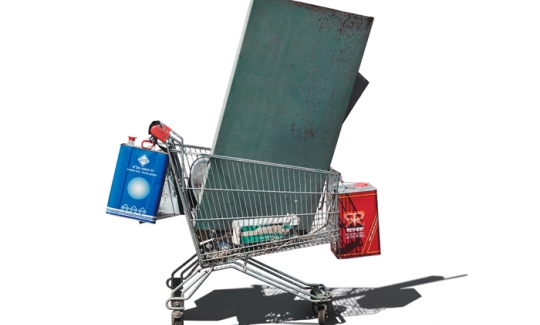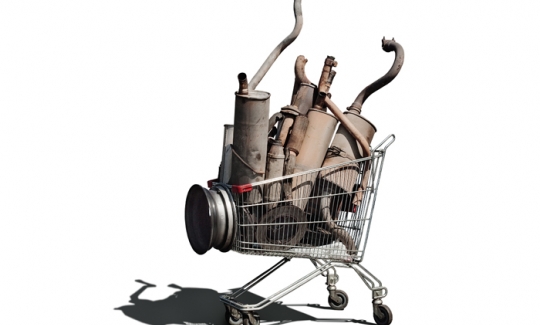Assaf Evron: Crystal Habit
Curator: Rotem Ruff
Saturday, 06.02.10
Saturday, 17.07.10
More info:
04-6030800Due to the sharp rise in the price of iron in recent years, gatherers of metal scraps have become a familiar component of Tel Aviv's urban landscape - an inseparable part of the unofficial shadow economy that exists alongside metropolitan commerce. Always in motion, they can be seen pushing shopping carts filled with metal pieces, which form ephemeral collections of sorts. The rapid accumulation and dissolution of these caches of metal may be likened to the lives of collections accumulated over a period of many years. Assaf Evron wanders throughout the city in order to find and photograph these crowded carts. He is personally acquainted with most of the metal gatherers and their regular routes, and describes his work as a form of urban "hunting," which consists of tracking down the object that will give rise to the desired image. Evron thus creates a parallel between the artist and the collector, especially in terms of their engagement in processes of classification and their desire for certain objects whose pursuit is a source of interest and excitement, and offers a material reward.
In his works, Evron does away with the carts' urban background. What remains are isolated images of their contents and the shadows they cast, which underscore their situation in space. The carts are recast as monumental sculptural objects with clearly defined compositions - objects which, like the Rorschach test, always resemble "something." This principal is given expression in the exhibition's title, "Crystal Habit" - the scientific term for the manner in which crystals are formed under a given set of environmental conditions. Evron's works similarly capture moments in which orderly structures imbued with meaning crystallize out of the random and frequently changing accumulations of metal scraps. These structures of meaning are never finite; the unity of the sculptural objects is disrupted the moment the viewer realizes that they are composed of everyday objects, which have been arbitrarily gathered and piled into the carts. Moreover, the carts themselves - which also function as pedestals and as a support for each sculptural construction - underscore the mobility and ephemerality of each "collection," which constantly moves and changes on its way to its destination.
Like other works by Evron, this series is characterized by calculated compositions, and bespeaks an enchantment with the texture and material presence of the objects; nevertheless, aestheticization is not a goal in and of itself, but rather serves as a point of departure for a wider discussion of power relations and the politics of the gaze, the status of photography within art history and its relations with other mediums. These works blur the distinction between photography and sculpture, and call for a rethinking of the conventional characteristics of these two categories and of the differences between them. Evron actively intervenes in everyday sites as he captures objects that often elude our gaze - a strategy that both addresses social concerns and the struggle for survival and offers a different model of visual attention.


